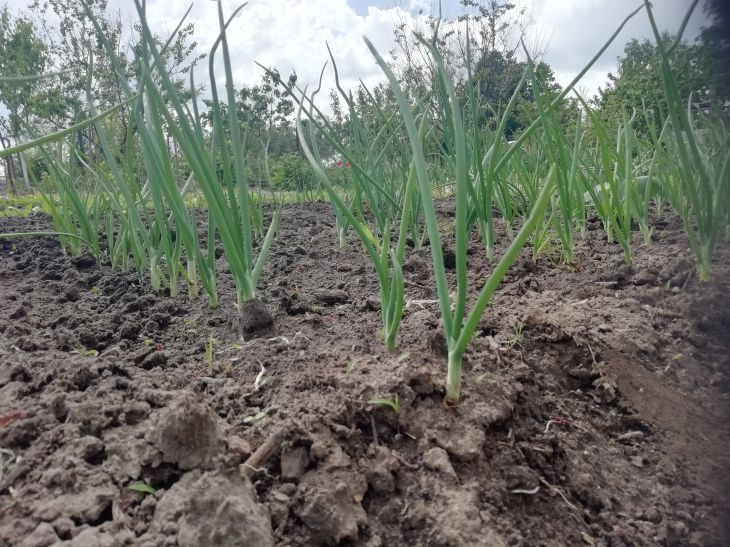What Plants Repel Onion Fly: Natural Protection for Your Crop
The onion fly is a real disaster for those who love to grow onions. This pest is capable of destroying the entire crop, leaving behind only rotting bulbs.
However, do not despair, there are natural ways to combat this pest that will help preserve your harvest. One effective measure is planting plants that repel onion flies.
Anastasia Kovrizhnykh, an expert of the online publication "BelNovosti" - a scientist agronomist and landscape designer, told how to act in such a situation.
Plants that onion flies don't like
Experienced gardeners have long noticed that some plants have a special aroma that onion flies don't like. The list of "unloved" plants includes:
• Marigolds. Bright marigolds not only decorate the garden, but also effectively repel the onion fly. Their strong aroma, containing thiosulfate, scares the pest and prevents it from laying eggs in the soil.

• Garlic. The strong aroma of garlic is unpleasant to many pests, including the onion fly. Plant a few garlic plants near your onions and you will significantly reduce the risk of a fly infestation.
• Dill. Fragrant dill has an unpleasant smell for the onion fly. Plant it next to the onion beds, and the fly will stay away.
• Parsley. Parsley not only repels flies, but also attracts beneficial insects that fight pests.
• Sage. Sage is a well-known medicinal plant, but it is also excellent at repelling onion flies.
• Basil. This aromatic, spicy vegetable repels not only flies, but also other harmful insects.
• Mint. Mint's pungent smell repels many pests, including the onion fly.
• Thyme. Thyme has a strong aroma that is unpleasant to many insects, including onion flies.
• Cornflower. Delicate cornflowers not only decorate the garden, but also repel pests, including the onion fly.
The effectiveness of the landing of "defenders"
It is important to understand that planting plants alone is not enough to provide complete protection against the pest. Repellent plants reduce the risk of an invasion, but do not guarantee complete protection. It is also recommended to use other methods of combating the onion fly, such as:
• Digging up the soil in the fall. Overwintering onion fly larvae hide in the soil. Digging up will destroy some of the pests.
• Soil treatment before planting. As a preventative measure, you can treat the soil before planting with a solution of potassium permanganate or a decoction of garlic.
• Mulching the soil. Mulch creates obstacles for the fly to lay eggs.
• Timely harvesting. By harvesting onions on time, you will prevent the emergence of new generations of the pest.
Plant combination is the key to success
To enhance the onion fly repellent effect, it is recommended to combine different types of plants. Create mixed plantings, including repellent plants and crops that need to be protected from pests.
Proper planting of repellent plants
Planting repellent plants should be done wisely. Do not plant them too densely, as this can lead to darkening of the beds and worsening of the conditions for the growth of the main crops.
The optimal solution is to alternate repellent plants with crops that need to be protected.
For example, rows of onions can be alternated with rows of marigolds, garlic, dill, etc.
It is important to remember that the onion fly is one of many pests that can affect onions. Therefore, it is recommended to use complex measures to protect the crop.
Previously, we talked about what fertilizers to apply when planting tomatoes in the ground .
